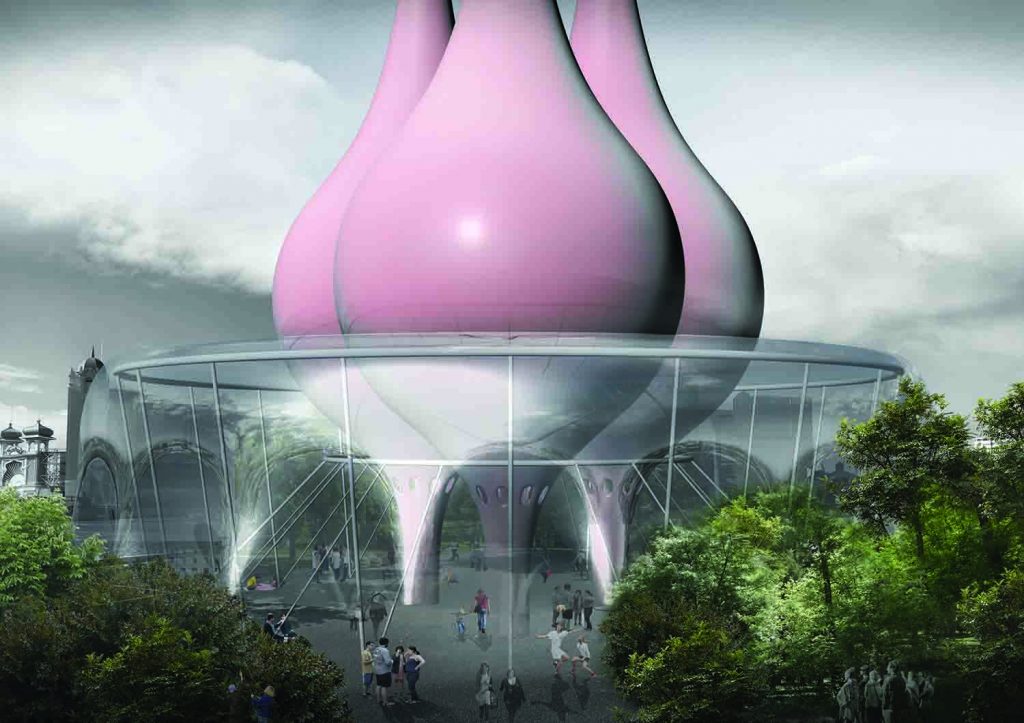
Artist team: Rafael Sánchez Herrera and Laura Mesa
Energy technology: thermal chimney
Annual capacity: 800MWh
A submission to the 2018 Land Art Generator Initiative Competition for Melbourne.
This design will forever change the way you think about public art.
Designed by the Colombian duo Rafael Sánchez Herrera and Laura Mesa, Breathing Totems comprises three bulbous towers acting as unique thermal chimneys that turn hot air and wind into clean energy. At the same time, this submission to the 2018 Land Art Generator Initiative design competition for Melbourne creates a protected public square for both locals and visitors to the City of Port Phillip — coupling leisure with the educational experience of watching a small power plant produce renewable energy in real time.
“The project is presented as a new urban public square that invites visitors to a space of entertainment and learning that adapts itself to the environment’s changing conditions, providing a comfortable micro-climate throughout the year,” say Herrera and Mesa in their artistic narrative.
Created specifically for St Kilda Triangle—a historic recreational destination on Port Phillip Bay that is popular with Melbournians—the large-scale work of art is capable of producing sufficient energy each year to power 160 homes. It also captures and filters pollution from the surrounding air, which the designers say is particularly important given the site’s proximity to a major transportation hub.
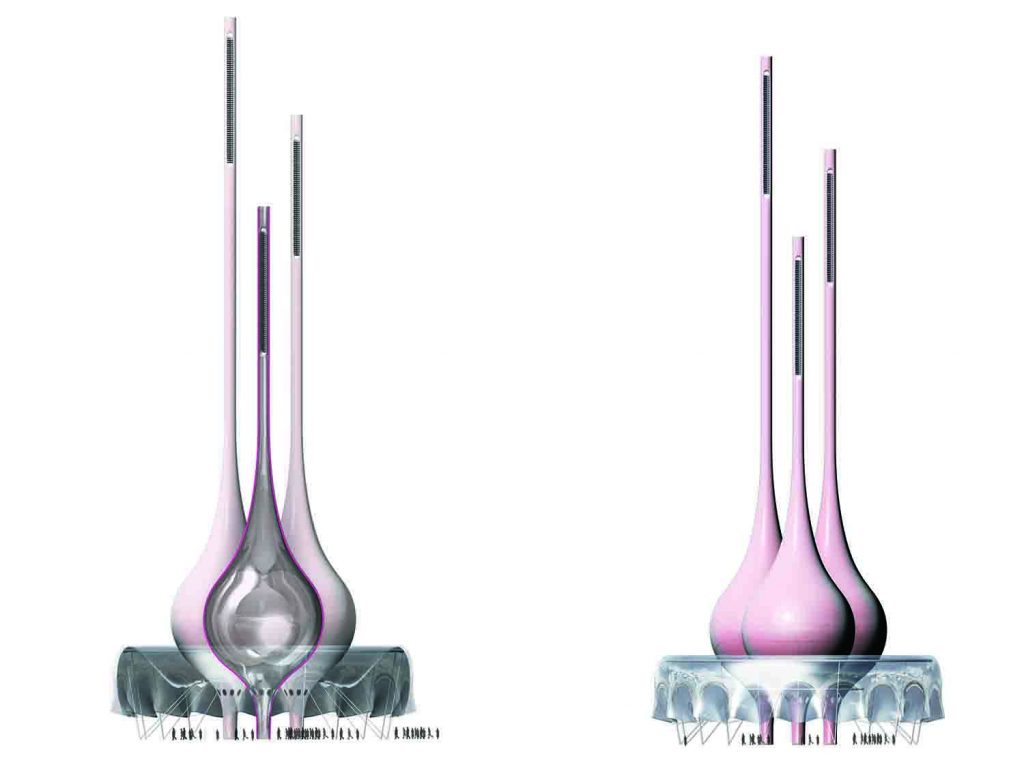
Artist team: Rafael Sánchez Herrera and Laura Mesa
Energy technology: thermal chimney
Annual capacity: 800MWh
A submission to the 2018 Land Art Generator Initiative Competition for Melbourne.
LAGI 2018 invited teams to design a clean energy landscape for a post-carbon world, helping to power the city and inspire the future. Herrera and Mesa responded with a proposal that harnesses two ubiquitous local sources of energy: “wind energy because it is so close to the sea and the thermal chimney because of the amount of sun through the year.”
The three towers are comprised of a metal material that the designers say they chose because of its low weight and easy energy transmission. During the day, sunlight is reflected from a protective ethylene tetrafluoroethylene (EFTE) membrane at the rotund base of the sculpture. Beaming sun rays heat up air inside the tubular metal ducts. Because hot air rises, this creates a flow of convection that drives turbines at the top of each of the three ‘totems’ — which in turn generate clean energy.
Shooting hot air up into the turbines not only facilitates energy production, but also makes the space below more comfortable.
“Low pressure in the sphere consistently pulls air into the lower perforations at the base of the totems,” according to the designers, “keeping the air naturally cool and fresh within the square.”
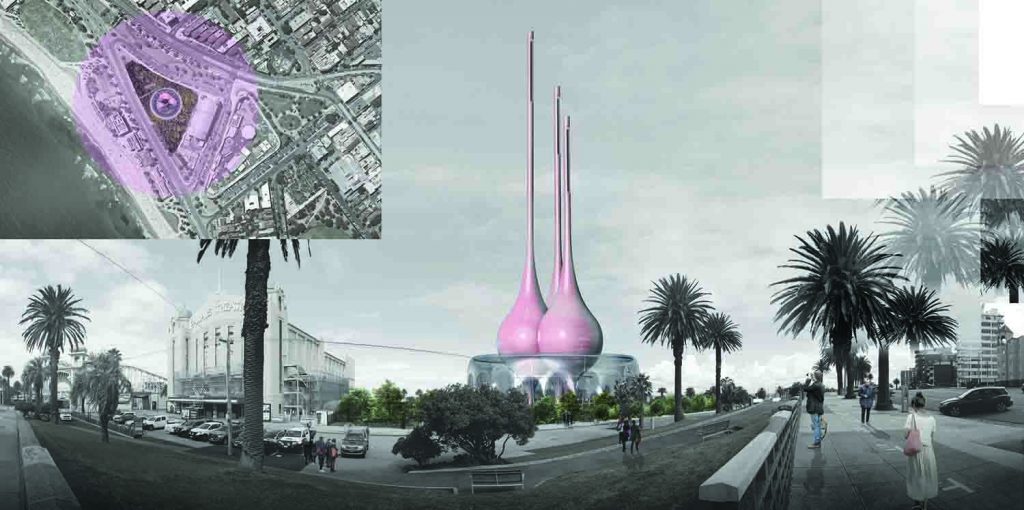
Artist team: Rafael Sánchez Herrera and Laura Mesa
Energy technology: thermal chimney
Annual capacity: 800MWh
A submission to the 2018 Land Art Generator Initiative Competition for Melbourne.
While the form may seem unfamiliar to many people, the technology upon which the design is based has long existed. Alfred Rosling Bennett first designed a ‘Convection Mill’ in the late 19th century, a model of which is currently housed in a glass dome case in London’s Science Museum. Even earlier, Leonardo Da Vinci demonstrated an understanding of the convection effect with his smoke-jack—a turbine with four vanes—envisioned for roasting meat on a spit.
Herrera says the form of their design “follows the function of how the energy is produced” and creates “a…public space for social interaction.” It is also responsive to changing site conditions, they explain in their narrative:
“On a summer night, the wind coming from the coast passes through the turbines at the top of the totems to augment the energy produced while the heat differential is lower. In cooler weather, the membrane on the square protects visitors from gusting winds, while turbines at the top of the tower capitalize on it.”
Taking environmental stewardship one step further, the couple included in their proposal a plan to absorb air pollution with green space and with the totems themselves, the interior of which are equipped with ionized surfaces that capture toxic particles. With their system, clean air flows upward while the toxins are sucked down into a safe collection container.
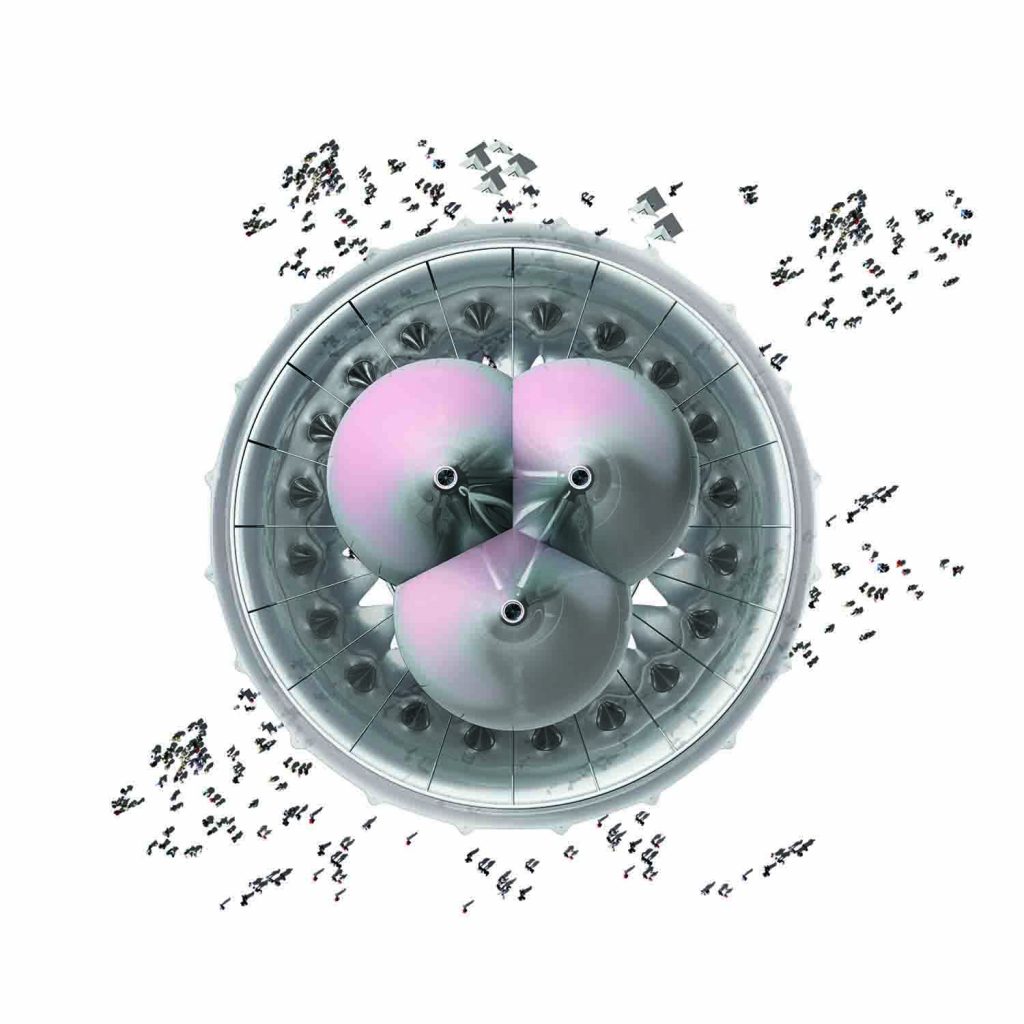
Artist team: Rafael Sánchez Herrera and Laura Mesa
Energy technology: thermal chimney
Annual capacity: 800MWh
A submission to the 2018 Land Art Generator Initiative Competition for Melbourne.
LAGI co-founders Elizabeth Monoian and Robert Ferry like the boldness and inventive engineering behind the project. They are quick to add that Herrera and Mesa’s LAGI 2014 entry, The Sound of Denmark, remains one of their favorite LAGI submissions.
“We like to imagine Breathing Totems was planted on the site and flowered naturally over a thousand years into the bold organic form you see here. It is perfectly adapted to its function as energy generator and air-purifying urban oasis, almost as if it evolved in place over time.”
Herrera and Mesa met as university students. Like Monoian and Ferry, who both attended Carnegie Mellon University in Pittsburgh, the second-time LAGI participants met at the Universidad de los Andes in Bogota. After graduation, they worked for a few years, and later moved to Vienna to complete a Master of Science in Urban Strategies at the University of Applied Arts in Vienna. Now they’re together in their home town working as architects.
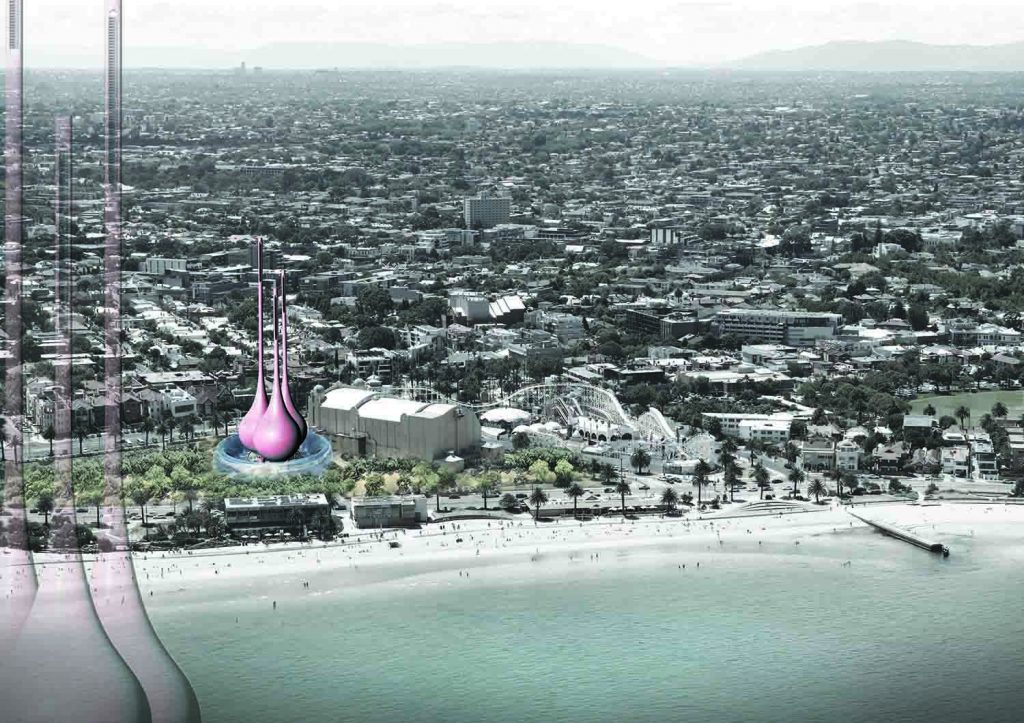
Artist team: Rafael Sánchez Herrera and Laura Mesa
Energy technology: thermal chimney
Annual capacity: 800MWh
A submission to the 2018 Land Art Generator Initiative Competition for Melbourne.
Having learned about LAGI through the internet, the pair decided to participate because they believe that converting energy-generating infrastructure into art is one tool that can help people to live in better harmony with the planet.
“That’s what we will need in the future.”
Tafline Laylin is a freelance communicator and journalist who strives for global environmental and social justice. Her work has appeared in The Guardian, The Atlantic, OZY.com, and a variety of other international publications.
